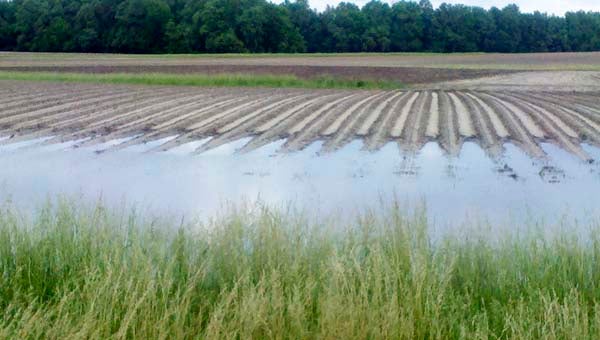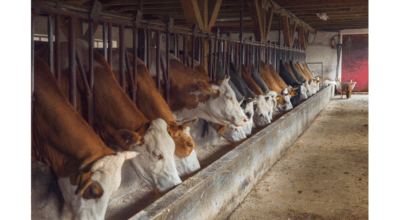Recent rain interfering with cotton growers
Published 10:36 am Wednesday, May 22, 2013

This field of peanuts at Edward S. Drake’s Farm on Cross Key Road, between Newsoms and Boykins, was under nearly a foot of water early Monday evening. The peanuts had been planted just this past Wednesday. — SUBMITTED/CHRIS DRAKE
BY STEPHEN H. COWLES/CONTRIBUTING WRITER
Playback58@gmail.com
NEWSOMS—The frequent rain of late has been on the minds – and fields – of many Southampton County farmers. But the moisture certainly hasn’t fallen in equal amounts, according to Chris Drake, extension agent. That uneven distribution is causing some concern for growers.
The several spots of rain that have accumulated at Sandy Ridge Farms in Newsoms, for example, could require replanting of cotton and peanuts. That, said farmer Westley Drake, would be not only costly, but also “time consuming and really aggravating.”
Cotton seed is not only the most expensive per pound, he said, but it’s also quite vulnerable.
“The seeds are so delicate, and can’t handle but so much moisture,” said Westley Drake. “The first 36 hours are critical, and that really affects the crop throughout the year.”
While peanuts are on raised beds, he explained, the cotton seed goes right in the soil.
“I’ve got a lot of cotton underwater that I’m concerned about,” Westley Drake said. “Up until the rain, everything was going as good as can be expected.”
Farmers in his area, as well as the county overall, got a lot planted in the past 10 days, he said, adding that for himself there’s a few acres of soybeans left to plant.
“The rainfall, as usual in Western Tidewater, has been highly variable to say the least,” Chris Drake said. “On Saturday, some people received no rainfall and some areas just north of Boykins got in excess of four inches of rain.”
He added that variations continued Sunday and Monday with pockets of downpours, and since Saturday, the total ranges from a few tenths of an inch to over five inches.
“We needed a decent shower to bring soil moisture back to levels acceptable for planting the remainder of the cotton acreage and soybeans,” said Chris Drake. “An ideal rain would have been from a half inch to maybe one inch at the most.”
Where there’s been an excess of three to four inches, those places would experience erosion, poor seed germination and poor early season plant health. The latter effect, he explained, could include crops becoming vulnerable to diseases, insects, poor root development and slow growth.
“Many acres of cotton and peanuts were just planted on Thursday and Friday. Those seeds cannot stand to sit in very moist, saturated ground for extended periods of time,” Chris Drake said. “We are at a point where cotton needs to be planted in the next 10 days to avoid potential yield losses. Corn needs to be sidedressed with nitrogen and full season soybeans need to planted. Additionally, many herbicide applications need to be made on recently planted cotton and peanut fields. If this water keeps people off the fields for several days, many production chores will be delayed, and thus could harm yields.”
Yet, he added, the effect on wheat should be minimal, and in some cases beneficial for filling out seed heads. “Though, anytime you receive several inches of rain in a 48 hour period, it is not good for crop fields.”
Chris Drake’s hope is that the weather clears up soon, then the farms that only got an inch or so would be ready in a day or two. Those farmers with four inches or more will be delayed even further.





